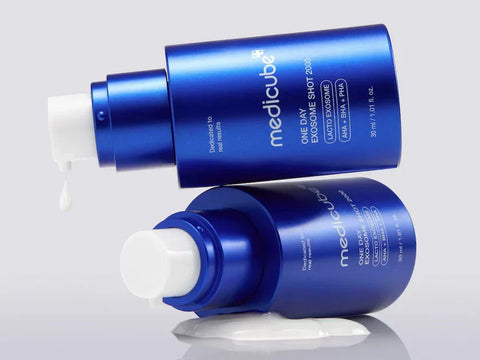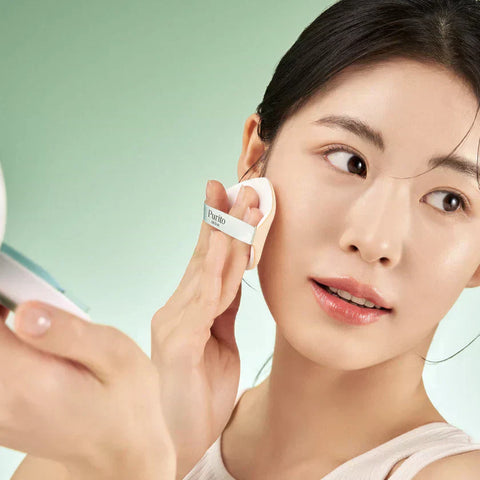Consumer interest in ethically produced cosmetic products has significantly increased in recent years. One of the main concerns is the use of animal testing to ensure product safety. Over the decades, regulations and laws regarding animal testing have evolved, and consumer demands have played a significant role in the development of cruelty-free cosmetics. But what is the current state of animal testing in the cosmetics industry? And what do Cruelty-Free labels really mean? In this article, we delve into the history of animal testing in the cosmetics industry and the current situation.
History of cosmetic testing 🐇
Some people ask, "Why not just test products on humans?" The truth is, this has been done in many ways. People have used untested products, effectively making themselves test subjects. For example, in the 18th century, lead-based face powders caused severe health issues.
Human experimentation has a particularly dark past. Tests have been conducted on individuals without their consent, including prisoners and those who had no means to refuse. Some of the most infamous cases include experiments conducted in Nazi concentration camps and the tests performed by Dr. Albert Kligman on Black prisoners between 1951 and 1974, which caused significant pain and discomfort.
In 1949, following revelations about the human experiments in Nazi camps, the Nuremberg Code was established, outlining ten ethical principles for human testing. The most important of these is informed and voluntary consent.
Today, cosmetics are still tested on humans, but using ethical methods. Dermatologist-supervised clinical trials are among the most reliable ways to ensure product safety. However, these trials require significant resources, making them inaccessible to some companies.
Animal Testing Banned in the EU 🚫
The European Union has enforced strict regulations on animal testing:
✅ 2004: Testing finished cosmetic products on animals was banned.
✅ 2009: Testing cosmetic ingredients on animals was banned, except for tests without available alternatives.
✅ 2013: A complete ban was enforced—finished cosmetic products or their ingredients cannot be tested on animals, nor can such products be marketed within the EU.
However, this does not mean that products tested on animals before these bans are not available on the market. Often, obtaining a cruelty-free label does not require that a product has never been tested on animals but rather that it is no longer tested.
Exceptions 📖
Although animal testing for cosmetics is banned in the EU, cosmetic raw materials are often classified as chemicals and may be used in other products beyond cosmetics. If an ingredient has been tested on animals to meet medical or chemical safety regulations, its use in cosmetics may still be allowed.
Is Animal Testing Banned in Korea? 🇰🇷🚫
In South Korea, animal testing for cosmetics was banned in 2018, and new alternative testing technologies continue to be developed. Many of Yeppo’s brands are committed to cruelty-free principles, including Hwarang, SKIN1004, and Purito.
![[hwarang'] Bellflower Moisturizing Barrier Cream](https://cdn.shopify.com/s/files/1/0550/1927/4448/files/hwarang-barrier-cream-texture.webp?v=1734307124)
Cruelty-Free Labels and Consumer Challenges ✍🏼
Cruelty-free labels indicate that a product has not been tested on animals. However, this term is not strictly regulated by law, meaning it can be used loosely in marketing. Combined with a lack of transparency and conflicting international regulations, this has led to consumer confusion about which products and brands are truly cruelty-free. Some are also confused by the terms Cruelty Free and Vegan being used interchangeably, though they are not the same thing. A product may be vegan but not Cruelty Free and the other way around.
Some organizations provide certifications with criteria for Cruelty Free products and brands. The most well-known include:
✔️ Leaping Bunny – The most rigorous cruelty-free certification.
✔️ PETA Cruelty-Free – Lists brands that do not test on animals.
However, the absence of a certification does not automatically mean a brand is not cruelty-free. Some certifications also require brands to be vegan, making it impossible for non-vegan companies to qualify. Additionally, certification is a paid process, which not all brands can afford.

Alternative Testing Methods and Future Prospects 🔬
Alternative methods to animal testing are continually being developed. Major cosmetic companies like L’Oréal in Europe and KTR in Korea are making significant investments in cruelty-free testing. KTR specializes in developing animal-free testing methods for companies. Moreover, increasing consumer demand for transparency and ethical practices puts pressure on the industry and regulators to advance non-animal testing methods.
Conclusion 🐰
We have come a long way, and thankfully, the situation regarding animal (and human) testing has greatly improved. It is clear that conducting animal tests for cosmetic products or their ingredients is not beneficial for brands—both consumers and many of the countries where these products are sold demand cruelty-free practices. Animal testing is also costly and does not always provide comprehensive results. Legislation is constantly evolving, making it essential to stay up to date by following reliable sources.
Yeppo strongly supports cruelty-free cosmetics and selects only brands that align with our ethical values.
💬 What do you think about this topic? Did you learn something new? ✨
Written on 20.2.2025
Sources:
European Parliament and Council Regulation on Cosmetic Products (EC) No. 1223/2009
Tukes 2025. Animal Testing in Cosmetics. Link
The Ecowell 2024. The Current State of Animal Testing in Beauty. Link
Albert M. Kligman’s Research. Link
KTR Animal Alternative Tests. Link



 info@yepposoonsoo.se
info@yepposoonsoo.se
 14 dagar returrätt
14 dagar returrätt
 PCI-DSS Compliant
PCI-DSS Compliant
 PayPal Buyer Protection
PayPal Buyer Protection
 Klarna – Pay Securely
Klarna – Pay Securely